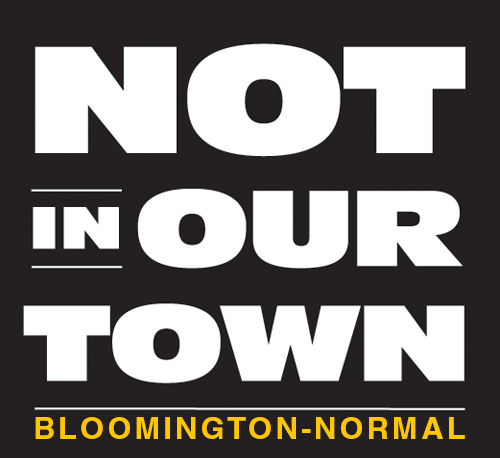Rick Lewis (Photo by Illinois State University)
Meet Jamol, Keith, Robert. If you saw them on the street, you might pass silently, skirt nervously around them, perhaps cross the street. Rick Lewis hopes that in a gallery setting, you’ll stop, reflect, want to get to know them just a bit better.
In an upcoming McLean County Arts Center show, Contemporary Portraiture, the Illinois State University associate dean of students and School of Art alumnus will display eight of an eventual series of 20 portraits of young African-American men.
Lewis’ somber portraits, largely of ISU students, have, in his words, been “stripped of the narrative” – of brand logos or symbols, background scenery, or other trappings that sometimes play into one-dimensional racial or socioeconomic stereotypes.
In that way, he argues, gallery visitors can “bring their own socialization process to the encounter,” taking time to study the essential human subject and, ideally, “internalize it.” And, in the process, perhaps lose some of the fear those images may hold for the socially uninitiated or underexposed and “look for commonalities with this guy.”
“If you took a poll of people who’ve had experience with or exposure to art, as kids or even as adults, I’d be hard-pressed to believe that they’ve seen people of color depicted in a lot of the art they’ve seen, whether it’s abstract or representational (realistic),” Lewis suggests.
“When you see other people, naturally you’re triggered to want to know what their story is...”
“Combine that with how black men have been depicted throughout history, in the media. Go all the way back to some of the cartoons of African-Americans around (the era of) slavery and emancipation or Jim Crow, and how black folks are depicted as either buffoons or as brutes and monster, dehumanized or made into monsters to create a sense of fear. Think about how that’s evolved throughout our entire country’s history, where you have a group of men who are now marginalized, criminalized, only seen as athletes or entertainers or criminals. People have some very incorrect assumptions or stereotypes about these groups.
“Some people may become a little more self-aware of who they are, just gazing at this artwork and it gazing back. Some people have had very rare opportunities to stand close to African-American males, to pay attention to what they look like and who they are. I like to run on Constitution Trail – I’m running south on Constitution Trail, and I see two African-American males walking in the same direction. We’re about 100 yards from the end of the trail, and I speak to these guys as I pass, no big deal. I get to the end of the trail, and I happen to notice a white guy getting on the trail. He’s going to be heading in the same direction these guys are coming, and you wonder what that encounter’s going to be like.
“If his self-awareness can be raised through this encounter, you would hope that when he gets into real-life situations, he might have a different reaction. He might say, ‘This artwork doesn’t harm me. Maybe I can develop a relationship with a total stranger and strike up a conversation, and find out there’s really nothing I need to be fearful about.'”
Lewis joins fellow artists Margaret LeJeune and Jason Patterson in the Jan. 9-Feb. 14 Bloomington art show, at 601 N. East Street. An accompanying reception is scheduled Friday, Jan. 16, from 5 to 7 p.m., while an “Art Talk” is set Tuesday, Feb. 3, at 6 p.m. The show and related events are open to the public.
The McLean County Arts Center is open Tuesdays from 10 a.m. to 7 p.m.; Wednesdays through Fridays, from 10 a.m. to 5 p.m.; and Saturdays, noon to 4 p.m.
Lewis, a 29-year ISU veteran, plans to complete his series in 2016, to coincide with his planned retirement. He admits 20 portraits “was a number I picked out of a hat,” but nonetheless one he hopes will prove “impactful” and illuminating in later exhibitions.
Since his 1987 graduation from the university, Lewis’ academic “passion” has been working with the university’s male African-American population, a group with whom he’s shared the too-frequent sensation of being “invisible” -- finding some colleagues reluctant to interact or even make eye contact, prone toward minimizing feedback or contributions, “or treating you as if you were suspect.”
He had largely given up painting by 1993, but the concept of using his art to illuminate the African-American male began to “incubate” over the last 20 years.
Lewis sees the visual arts, and portraiture in particular, as a trigger for curiosity and, ultimately, empathy.
“Art comes in all shapes and sizes, produced by all types of people,” Lewis states. “Mine just happens to be realism, which people tend to be able to connect with a little bit easier. When you see other people, naturally you’re triggered to want to know what their story is.”


